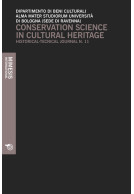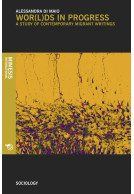Google Books previews are unavailable because you have chosen to turn off third party cookies for enhanced content. Visit our cookies page to review your cookie settings.
Yaghnobi Studies I (Paperback)
Imprint: Mimesis International
Pages: 208
ISBN: 9788857521824
Published: 30th December 2014
Script Academic & Professional
Pages: 208
ISBN: 9788857521824
Published: 30th December 2014
Script Academic & Professional
You'll be £20.50 closer to your next £10.00 credit when you purchase Yaghnobi Studies I. What's this?
+£4.99 UK Delivery or free UK delivery if order is over £40
(click here for international delivery rates)
Need a currency converter? Check XE.com for live rates
(click here for international delivery rates)
Need a currency converter? Check XE.com for live rates
The present volume collects some contributions about the Yaghnob Valley inspired by or directly developed in the framework of the various scientific missions of the University of Bologna in Tajikistan (2007-2012). The articles here collected follow, as far as it is possible, a chronological order, starting with the studies concerning the history of the Yaghnobis considered in the framework of the Upper Zarafšan region, beginning from the Sogdian period to the early Islamic age, up to those essays focusing on ethno-linguistics and related political aspects. Thus, old questions have to face new problems and social needs, in a very delicate and politically complex area, which now is experiencing a deep economic crisis, but that holds important energetic and mining resources. Both the researches aiming to clarify which were the political and economic role of the Yaghnob Valley during the Sogdian period, and the studies that try to explain the peculiar use and development of the Yaghnobi language, in the light of the socio-cultural politics of the Republic of Tajikistan, deserve great attention. From different point of views it has been deeply discussed the problem of the Yaghnobis’ isolation and uniqueness: the results seem to be very innovative. Also particular historical cases, such as the terrible Anzob plague (1898), have been analysed as a case-study in order to better understand the Czarist policy towards minorities in Central Asia, a relevant theme in Soviet and post-Soviet time, too. The strong humanitarian profile of these missions is well represented by some pharmacological and medical contributions. Finally, useful and detailed maps of the Yaghnob Valley, created with the GIS technology, were included at the end of the volume.
Other titles in Mimesis International...















